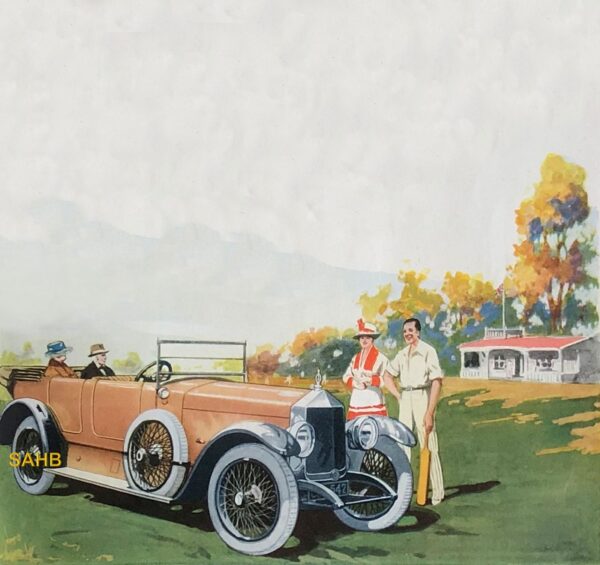
Guy Motors were registered on Saturday 30 May 1914 by Sydney S. Guy (1885-1971), on the same day that he left his position as works manager at the Wolverhampton factory of Sunbeam. The Guy factory was built at Fallings Park in Wolverhampton and the company would operate there until 1982, making an important contribution to the British motor industry.
The principal products of Guy Motors were always lorries and buses, the first being a 30cwt lorry built from September 1914. This benefitted from a much lighter form of pressed steel frame than the commonly used heavy rolled steel channel frames of the time. This enabled the vehicle to cross difficult terrain: a 14-seat post bus based on the design was used for crossing the Scottish Highlands.
In 1915 Guy Motors came under control of the Ministry of Munitions and production turned to lorries for the war effort. Guy brought out a revised version of their 30cwt lorry in May 1915, with the engine (made by White and Poppe) and transmission mounted on a separate subframe. A year later they revealed their new 2-ton model, this time powered by a Tylor JB4 engine, a type approved by the War Office for such makers as Guy, Karrier and AEC. Guy also produced Wasp and Dragonfly radial aircraft engines, Tylor truck engines and Maudslay gearboxes, and they were also the country’s largest maker of depth charge fuses. This wartime production enabled Guy to expand their factory and to become a major manufacturer after the war.
And now we come to the remarkable Guy V8 car. In 1917 Sydney Guy applied for two patents relating to modified valve gear, one of these outlining how it could be used in a V8 engine. The valve gear used horizontal side valves, said to give the advantages of overhead valves with easier maintenance. In 1919 he launched a new version of his 2-ton truck with an engine using this valve gear. In the same year he started production of his first car, a luxury 4-litre V8 with the same valve gear; this was the very first British V8 engine. The engine had detachable cylinder heads and aluminium pistons. Automatic chassis lubrication was provided, activated every time that the steering was turned to full right lock.
The Guy cars were produced in a separate works and in relatively small numbers – perhaps no more than 25 in total. The chassis price was set at £1275, more than a Daimler 30 but less than a Rolls-Royce 40/50 HP or a Leyland Eight. The chassis price was reduced to £1095 in 1923, the last year that the V8 car was offered.
Guy offered smaller cars from 1922 but ceased car manufacture in 1925. They continued to make lorries and buses until, after takeovers by Jaguar and then British Leyland, they were closed in 1982.
Image courtesy of The Richard Roberts Archive: www.richardrobertsarchive.org.uk







Leave a Comment